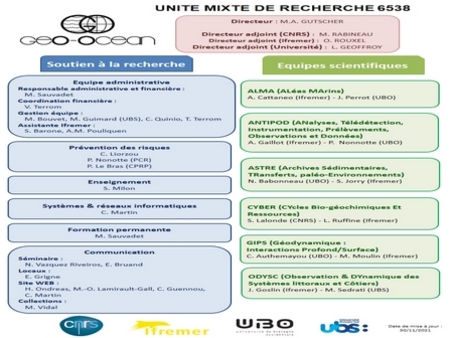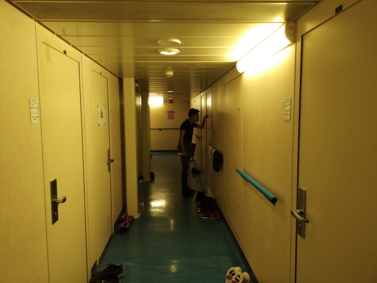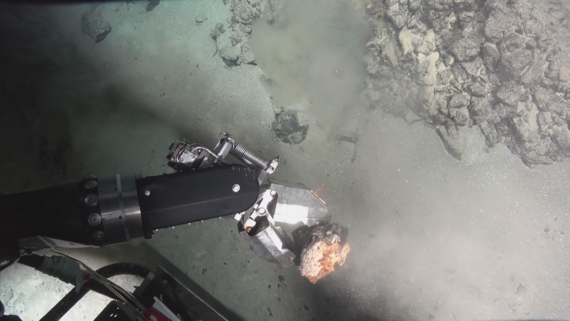Rock sampling
Rock dredging
The technique consists of dragging a rock dredge composed of an open steel box of 1 m in diameter armed with solid teeth over a slope of underwater relief. The aim is to collect the broken rocks in the chain net at the back of the dredge
Mathieu, Sandrine, Audrey or Mickaël join the bridge to be as close as possible to the action and follow the course of the dredge at the seabed thanks to an acoustic positioning beacon installed 250 m upstream of the dredge. Despite the operations taking place quite late in the day, concentration is essential in order to complete the tracking sheet and note:
- Time of arrival of the dredge at the bottom,
- Every "catch", when the dredge clings to the bottom and possibly rips a rock from the ocean floor,
- When the dredge returns to the surface.
By comparing the time of the noted events mentioned above with the navigation data of the Pourquoi Pas? we can quite precisely trace the route of the dredge and the points of sampling.
While the dredge is being brought back to the surface, a member of the team runs as quietly as possible up and down the corridors to wake the rest of the team before the dredge arrives on deck. Crates are prepared to collect the most interesting rocks from the dredge.
Once on the deck the dredge is photographed so that we can, at any time, look back at the first images of the recovery. Mathieu, Florian and Léa then rush to the dredge to sort the rocks to keep while Sandrine, Audrey and Mickaël, while helping them, also try to help them not keep too many rocks. Sometimes Ewan, the co-head scientist, shows up to delve back into the scents of freshly fished rocks. Once the selection is made, the remaining rocks are returned to the sea.
The crates are then taken to the laboratories, hence the importance of limiting the quantity of rock samples.
Nautile's claw
Throughout the dive, the scientists take several types of sample, including rocks, which they number according to the order of sampling. They also note the time of sampling.
Once the Nautile is back on deck, the whole team waits patiently for the diver to recover the rocks, whilst applying the number and sampling time to each sample.



